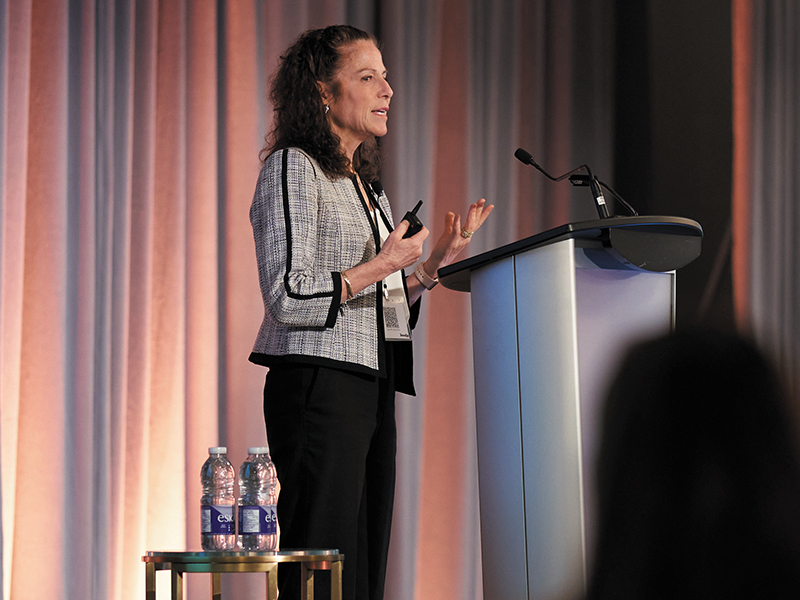
Building a defined contribution pension plan’s investment portfolio should incorporate the benefits and drawbacks of various historical regimes to provide a strong foundation, said Ruthann Pritchard, institutional portfolio manager for global asset allocation at Fidelity Investments, during a session at Benefits Canada‘s 2022 DC Plan Summit.
“A robust glide path has to consider all of the different regimes and assemble the asset classes in such a way that it’s taking into account all of the risks and opportunities . . . for each of the members. And then, also, taking into account the uncertainty that comes with moving from one regime to the next.”
Referring to Fidelity research that used proprietary machine learning and artificial intelligence, Pritchard outlined five different regimes alongside 10 different asset classes. In low volatility falling rates, which has occurred about 44 per cent of the time historically, most asset classes are positive. In low volatility falling rates, roughly 22 per cent of the time, equities are still positive and bonds are less favourable.
Read: Survey finds U.S. employees confident about retirement, but inflation, pandemic concerns linger
The remaining regimes are transitory — they’ve tended to occur less often and are shorter in length — and include deflation, inflation and recovery. Deflation, which has occurred about 12 per cent of the time, shows equities are negative, though U.S. equities tend to do a bit better than Canadian or international equities.
“The correlations between stocks and bonds are negative, so bonds have a positive return,” said Pritchard. “And what that means on the glide path is that something like short-term debt, which has lower volatility, can really bring good stability into the glide path and be important for members as they age.”
During inflation, about eight per cent of the time, inflation-sensitive assets like Canadian equities and real return bonds, do better, she said, noting gold and commodities tend to do best here as well. And during recovery, all asset classes have strong returns, but they’re really volatile. “Those asset classes that have lower volatility, like cash, can really be good diversifiers and provide a lot of resiliency and stability and consistency of performance in the funds for those members that are older and really want that stability and consistency.”
Read: Economic, geopolitical factors causing inflationary uncertainty for institutional investors: report
Coming to the present, Pritchard said it’s a different era from a geopolitical risk standpoint. With Russia’s invasion of Ukraine and China’s rise as a global power while the U.S. declines, all of these powers are vying for their own time on the global stage, she noted.
In terms of broader secular trends, she cited record-high debt levels, extraordinary monetary and fiscal policies, rising de-globalization pressures, greater inequality and aging demographics. The investment implications of these trends are a greater likelihood of inflation risk, higher policy risk, higher profit margin pressures from de-globalization and less financial stability overall.
“All of this points back to the need for diversification, a need for understanding a regime framework.”
